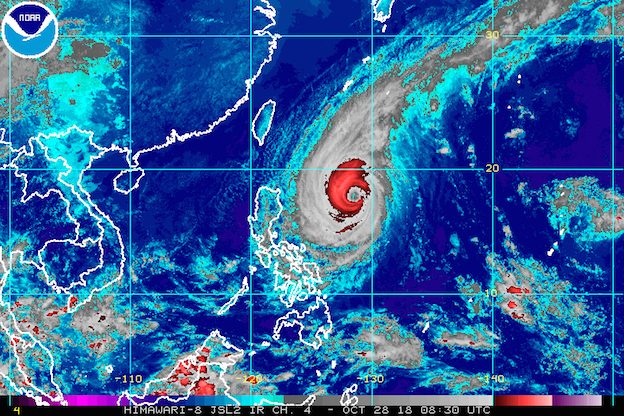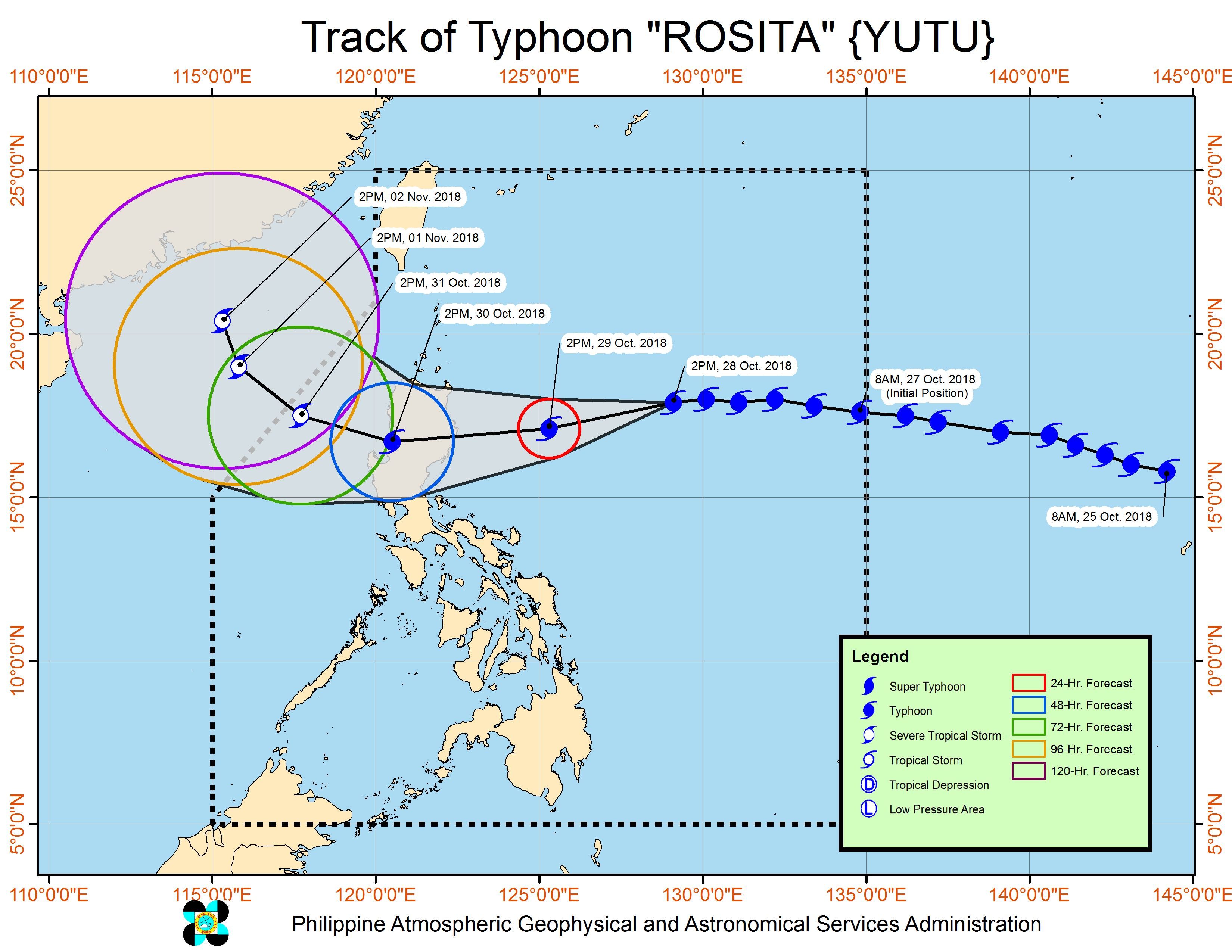SUMMARY
This is AI generated summarization, which may have errors. For context, always refer to the full article.

What’s the weather like in your area? Report the situation through Rappler’s Agos or tweet us at @rapplerdotcom.
MANILA, Philippines – Typhoon Rosita (Yutu) is now projected to make landfall in the Isabela-Aurora area, no longer in Isabela-Cagayan as earlier expected.
In a Facebook Live video past 5 pm on Sunday, October 28, the Philippine Atmospheric, Geophysical, and Astronomical Services Administration (PAGASA) said Rosita is already 760 kilometers east of Aparri, Cagayan, or 750 kilometers east of Tuguegarao City, Cagayan. It is still moving west at 20 kilometers per hour (km/h).
PAGASA Weather Specialist Aldczar Aurelio explained that Rosita slightly shifted downward, so the area of its projected landfall has changed to Isabela-Aurora.
The typhoon continues to have maximum winds of 200 km/h and gustiness of up to 245 km/h. It has a huge diameter of 800 kilometers.
PAGASA said tropical cyclone warning signals may be raised in parts of Northern Luzon and Central Luzon as early as Sunday evening. This will give these areas a lead time of 36 hours to prepare for the effects of the typhoon. (READ: Cagayan braces for Typhoon Rosita a month after Ompong)
Moderate to heavy rain and strong to very strong winds may begin hitting Northern Luzon and Central Luzon starting Monday evening, October 29. Also on Monday evening, Signal No. 1 could be raised in Metro Manila. (READ: #WalangPasok: Class suspensions, Monday, October 29)
On Tuesday morning, October 30, Rosita could make landfall in the Isabela-Aurora area. (READ: FAST FACTS: Tropical cyclones, rainfall advisories)
PAGASA warned that flash floods and landslides are possible in areas in the typhoon’s path. There might also be storm surges in coastal areas of Isabela, Cagayan, and Aurora.
Sea travel is also risky in the seaboards of Northern Luzon and Central Luzon, as well as in the eastern seaboards of the Visayas and Mindanao.
A gale warning was issued at 5 pm on Sunday for Batanes, the Babuyan Group of Islands, Calayan, Cagayan, Ilocos Norte, Isabela, Ilocos Sur, La Union, Pangasinan, Aurora, Zambales, Bataan, Camarines Norte, Camarines Sur, Catanduanes, the eastern coast of Albay, the eastern coast of Sorsogon, the eastern coast of Quezon including Polillo Island, Northern Samar, Eastern Samar, Surigao, Siargao, and Dinagat Islands.
Seas off those areas are rough to very rough, with wave heights reaching 2.6 meters to 4.5 meters.
PAGASA advised fishermen and others with small vessels not to set sail in areas covered by the gale warning. Larger vessels should watch out for big waves.
Based on Rosita’s latest forecast track, it will leave the Philippine Area of Responsibility either on Wednesday, October 31, or on Thursday, November 1.

Rosita is the Philippines’ 18th tropical cyclone for 2018. The country usually gets an average of 20 tropical cyclones per year. (READ: LIST: PAGASA’s names for tropical cyclones in 2018)
Aside from the typhoon, the northeast monsoon will also trigger light rain in the Ilocos Region, Cagayan Valley, the Cordillera Administrative Region, and Central Luzon on Monday. But PAGASA said there will be “no significant impact.”
The rest of the country will also have localized thunderstorms on Monday, mostly in the afternoon or evening. Flash floods and landslides are possible if the thunderstorms bring heavy rain.
PAGASA declared the start of the rainy season last June 8. – Rappler.com
Add a comment
How does this make you feel?
There are no comments yet. Add your comment to start the conversation.